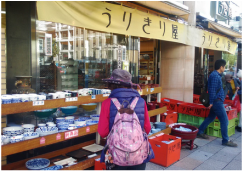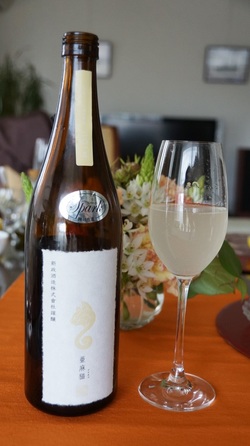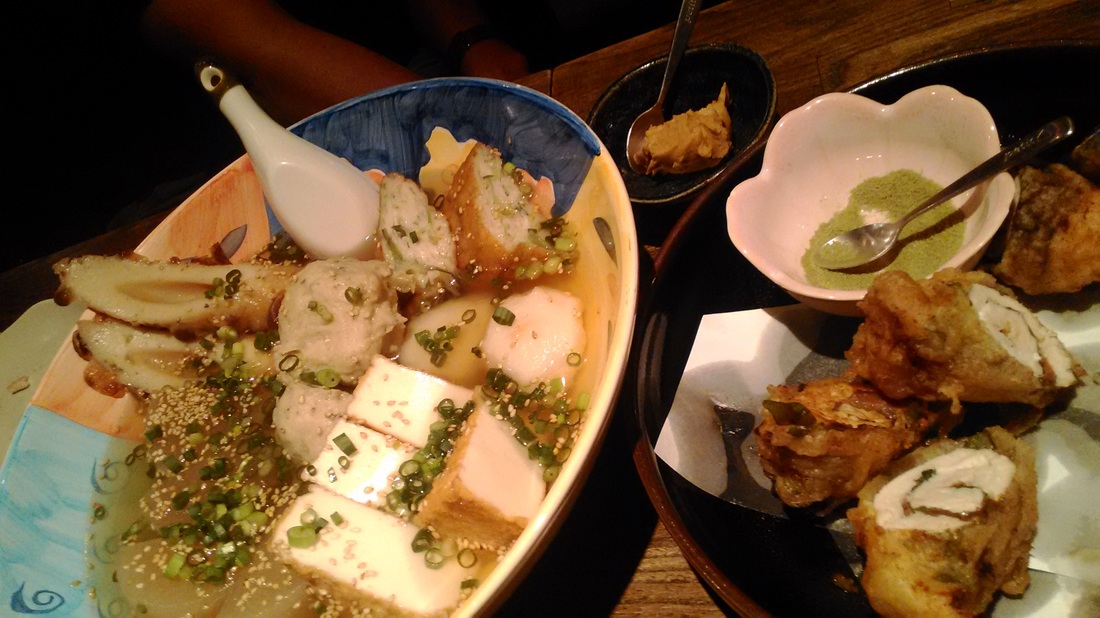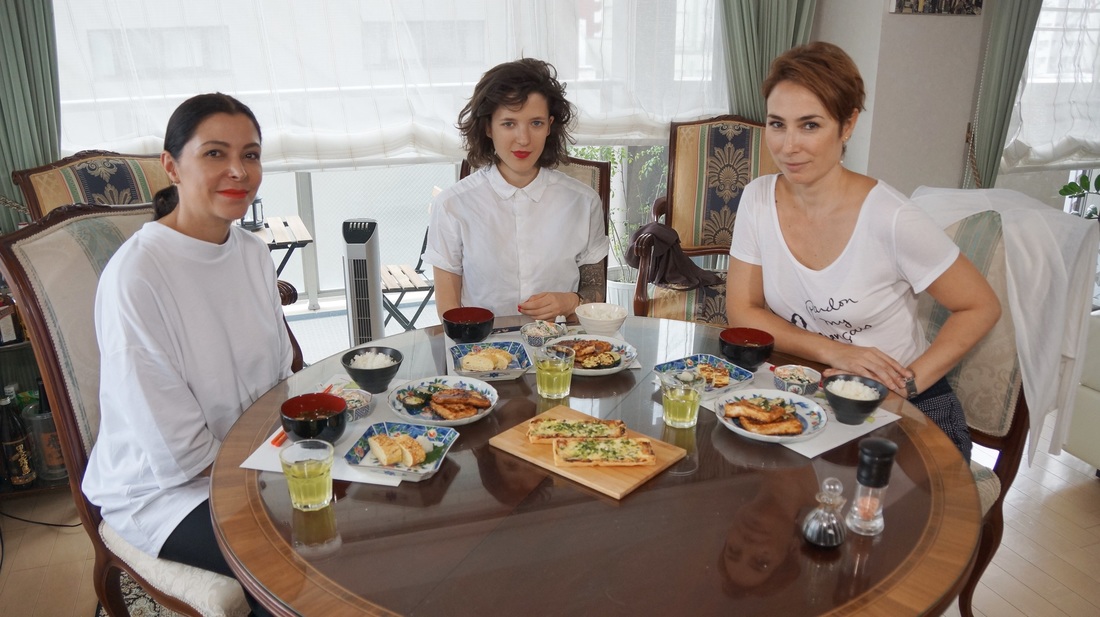|
It has been so cold this past week, so our gathering at the Daikan an izakaya that specializes in oden was just right. Oden is a Japanese Oden is a Japanese winter dish consisting of several ingredients such as boiled eggs, daikon, konjac, and processed fishcakes stewed in a light, soy-flavored dashi broth,
Daikan is located between Daikanyama and Ebisu, a short walking distance from both stations, hidden in a quiet area away from the hustle and bustle of the city. Although Daikan specializes in Oden, you can enjoy other dishes which are also very very nice. We ordered "omakase course" that consisted of several dishes including a omelette with mushroom gravy with a hint of yuzu, fried chicken breast with yuzu pepper filling, grilled sanma with mushrooms, which finishes off with a big bowl of oden. I would definitely come here more often if it was in my neighborhood even alone, as there is a counter space where you can sit across from the chef and chat. There are also two tables that seats 4 each. The owner chef is an ex-sony staff so you the place is like a mini sony museum with displays of the old walkman series and more. The photo on the tabelog doesn't do much justice to the place as it is much nicer and the atmosphere is good with friendly staff. Daikan : Tabelog Website (in English)
0 Comments
The other day I made a trip to Tsukiji, where the fish market was. I had always thought that Tsukiji was a bit far from my place and I had to change trains to get there. But actually, If I took the Asakusa Line from Gotanda, which is about 10 min. by foot from my place, it only takes 13 min. to Higashi Ginza which is a short walk from the fish market. So, what have I been doing spending twice as much time and double the train fare to get to the fish market till now? I will definitely be going there more often now! The Tsukiji Fish Market was crowded with tourist as expected and I just wandered around the outer market (場外市場)and did some shopping to get some nori seaweed and green tea. I knew I had some fish left over from the class the previous day, so I didn't get any fish, but needless to say, if you would like good quality tuna for sushi or sashimi at a reasonable price, Tsukiji is the place to go. I got a couple of copies of the Tsukiji Fishmarket Map in English from the information center. If you happen to be in my class and would like a copy, please ask. You can also download it from here (Tsukiji Outer Market Guide)  I found a huge shop that carries all sorts of Japanese Pottery on my way to Tsukiji from Higashi Ginza. Don't judge the shop by the ground floor, because if you go upstairs, there is a vast collection of all sorts of Japanese dishes and plates. Urikiriya (うりきり屋) Website (in English)  I was also interested in small spice shop in the market that sells all sorts of spices at a reasonable price as well as other condiments. I think I will take a closer look next time Hattori Shoten (服部商店) Website (in Japanese)  I also came across a very nice shop that sells all sorts of Traditional Kitchenware. Tsukiji has a couple of these shops so if you don't want to make that trip to Kappa Bashi, you can get some here. Tsukiji Hitachi-ya (つきじ常陸屋) Website (in Japanese) Yesterday was this year's first Japanese Style Cocktail Party Class for my vegetarian students. This year, I've come up with a new menu, "Kohaku Namasu (紅白なます)in Yuzu Cups" which is actually a very traditional New Year's dish here in Japan. Kohaku in Japanese means Red and White, which is the color for celebration. Towards the year end you may see a bright red carrot (called Kintoki Ninjin) from Kyoto which is used for this dish. The other dishes are the temari-sushi (Sushi Balls), and Tofu and Avocado Verrine with a hint of wasabi which isn't actually a typical Japanese Dish, but will look good on the table. For the vegetarian course, I've made the Seared Tuna with Yuzu Dressing and Japanese Herbs, which is a typical Japanese dish usually using the bonito fish (called Katsuo no Tataki) instead of the usual Mini Yakitori (Grilled Chicken)  This course comes with a glass of sparkling sake. This time I got "Amaneko Spark" which uses the same method as champagne as opposed to the other ones made by adding gas to the sake. It is a bit sweet (as it is made with rice) but not too sweet so you can enjoy it with your meal. You can get it on Amazon but they charge 3 times the market price so look for it somewhere else! I got one at my local liquor shop 内藤商店(Naito Shoten) This shop is great if you like shochu or Sake, as they have a wide selection and the staff is knowledgeable. Naito Shoten: Tōkyō-to, Shinagawa-ku, Nishigotanda, 5 Chome−3, An article on Naito Shoten on Japane Times>>> For details of this course please visit this page. The latest class schedule is out. I have some spots left for these classes. If you are booking for two or more people, other dates can be arranged depending on availability.
Two days after the first shooting, there was another one for the NHK program. This time it was my class for Tofu dishes. It seems like the trend to be vegetarian in western countries nowadays as I get more vegetarian requests for my class. On the contrary, Japan is consuming more meat as with the rest of the Asian countries.
After class, I introduced my Tokyo Grocery Shopping Guide, which I really hope wouldn't get edited out. This shooting will air in December or January. Website: 2020 Tokyo Minnano Ouen Keikaku (Everyone's plan to support 2020 Tokyo) |
AuthorI'm Miyuki and I teach Japanese Home cooking at my home in Tokyo. Archives
February 2021
Categories
All
|
service |
Information |
© COPYRIGHT 2015. ALL RIGHTS RESERVED.
|









 RSS Feed
RSS Feed
